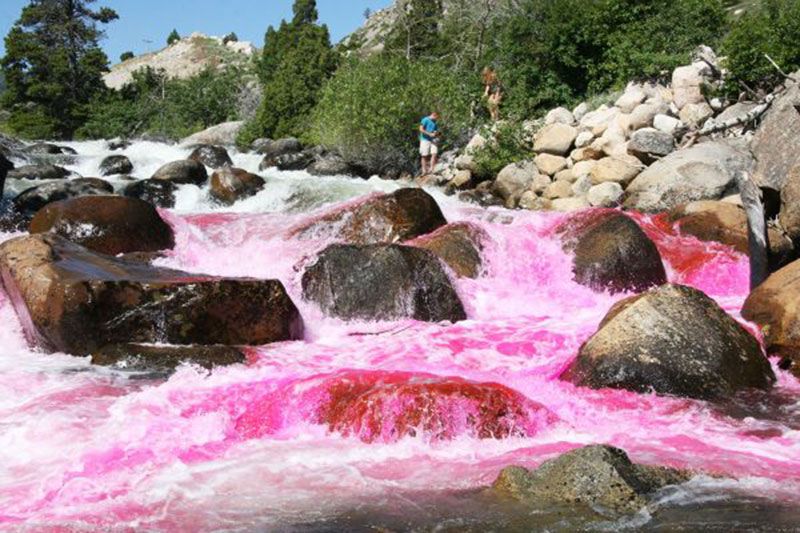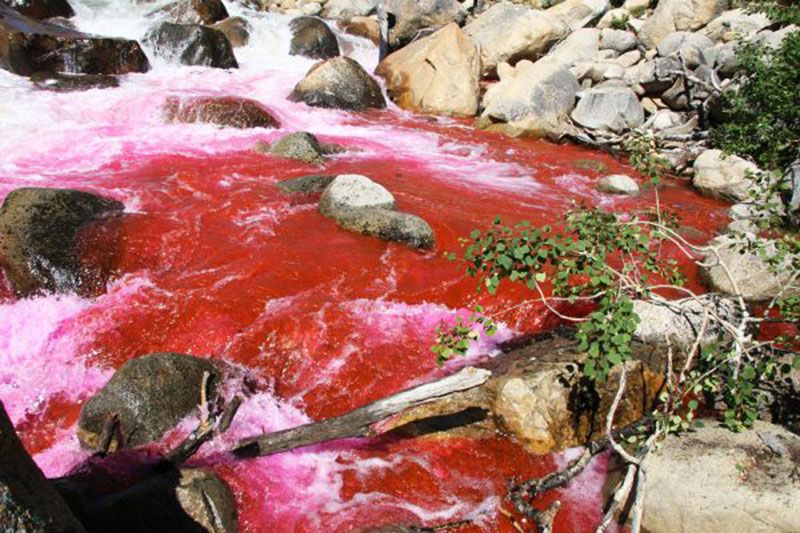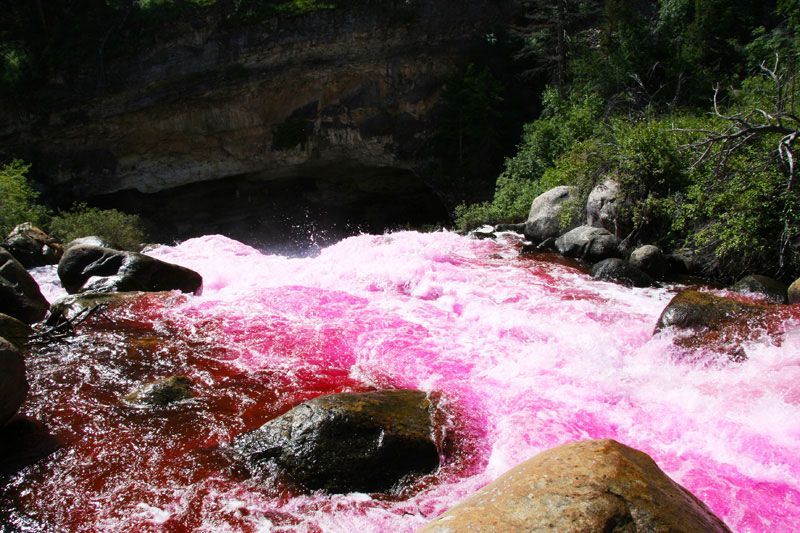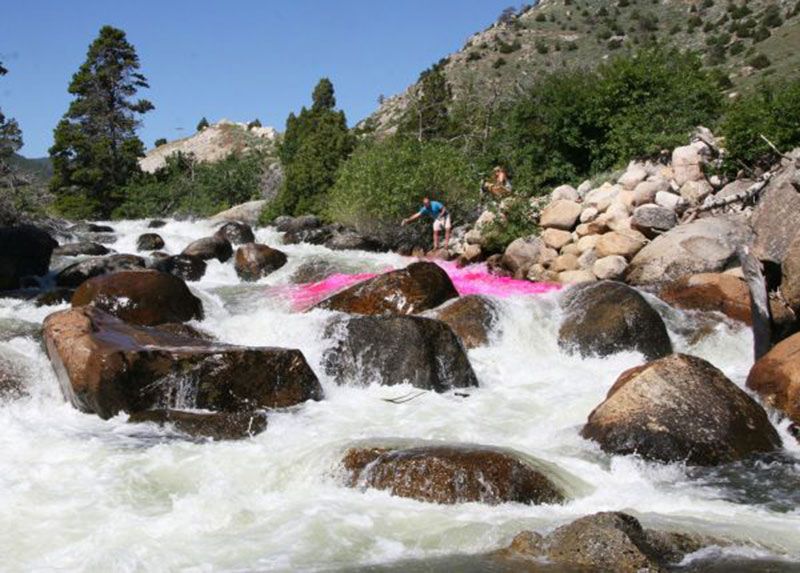For many years it wasn’t known for sure if the water going in at the Sinks was the same water coming out at the Rise.
The first official dye test was conducted in 1983 by the United States Geologic Service. Harmless florescent dye was poured in above the Sinks, and testing with a flourometer began simultaneously at the Rise. Samples were taken at three points in the Rise.
The bright red dye quickly turned the river a bright red (see photos), but the water quickly diluted the dye and it disappeared. The only way to detect the dye was with the flourometer which recognized the dye’s chemical signature.
The test proved the connection between the Sinks and Rise, but a mystery was discovered – it took the water over two hours to make the journey underground to re-emerge at the Rise.
It was also discovered that a slight amount more water came out at the Rise than went in at the Sinks and the water was a little warmer.
Geologists believe the reason the water takes so long (the journey is only ¼ mile above ground – a few minutes of travel time for water in a normal river channel) is that there are many winding underground passages the water has to work through – the Madison formation is like a maze underground: lots of cracks and fissures, dead ends, sand traps and side channels that the water has to filter through.
Four dye tests conducted since 1983 by the University of Missouri Geology Camp have reinforced the original test. The water going into the Sinks comes out at the Rise, but the volume of water going in changes the travel time underground. The higher the volume (such as in early summer) the faster the water comes out at the Rise, and the lower the volume the slower it comes out. It still takes the water from two hours to four hours make the journey even with different volumes flowing in.
It was also discovered that water from the Sawmill Sinks in the next canyon appears in the Rise, indicating an underground connection in the Madison Limestone between the canyons.




